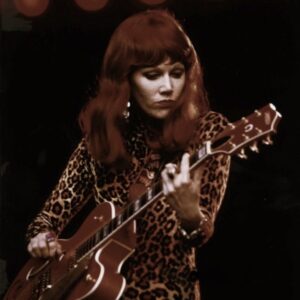The world of coffee is a complex and nuanced one, filled with a wide variety of flavors, techniques, and expert opinions. For those looking to elevate their coffee game, understanding the art of brewing is essential. From the richness of a perfectly balanced espresso to the subtle notes of a pour-over, each method requires a specific set of skills and attention to detail. In this comprehensive guide, we’ll delve into the world of expert brews, exploring the techniques, tools, and tips necessary to create truly exceptional coffee.
Understanding Coffee Roasts
Before diving into the world of brewing, it’s essential to understand the different types of coffee roasts. From light to dark, each roast level brings out unique characteristics in the bean, affecting the flavor, acidity, and body of the final brew. Lighter roasts tend to be more acidic and fruity, while darker roasts are richer and more full-bodied. Understanding the nuances of each roast level is crucial in selecting the perfect beans for your brewing method.
Espresso: The Ultimate Brew
For many coffee aficionados, espresso is the pinnacle of brewing. This highly concentrated shot of coffee requires precise temperature control, pressure, and technique to produce a perfectly balanced flavor. Espresso machines can range from manual to automatic, with each type requiring a specific set of skills and adjustments. To create an exceptional espresso, it’s essential to understand the intricacies of grind size, tamping, and brewing time.
Pour-Over: A Manual Brewing Method
Pour-over brewing is a manual method that allows for a high degree of control and customization. This technique involves slowly pouring hot water over ground coffee beans in a filter, resulting in a clean and nuanced flavor. Pour-over brewers come in a variety of materials, from glass to copper, each affecting the flavor and aroma of the coffee. To master the pour-over method, it’s essential to experiment with different grind sizes, water temperatures, and pouring techniques.
French Press: Rich and Full-Bodied
French press, also known as a cafetière or coffee press, is a classic brewing method that produces a rich and full-bodied coffee. This technique involves steeping coarse coffee grounds in hot water and then pressing the grounds to the bottom of the container to separate the liquid. French press coffee is known for its bold flavor and thick texture, making it a favorite among those who enjoy a heartier brew.
Cold Brew: A Summer Staple
Cold brew coffee is a refreshing and smooth brewing method perfect for warm weather. This technique involves steeping coarse coffee grounds in cold water for an extended period, usually 12-24 hours, resulting in a low-acidity and full-bodied flavor. Cold brew coffee is ideal for those who prefer a milder flavor and is often served over ice or used as a base for coffee drinks.
Brew Guide: Tips and Tricks
- Use fresh, high-quality beans: The quality of your coffee beans is essential in producing an exceptional brew.
- Experiment with grind sizes: Different brewing methods require specific grind sizes to produce the optimal flavor.
- Monitor water temperature: Water temperature plays a crucial role in extracting the perfect amount of flavor and oils from the coffee beans.
- Invest in a good grinder: A good grinder is essential in producing a consistent grind size and releasing the optimal amount of flavor from the beans.
- Clean and maintain your equipment: Regular cleaning and maintenance of your brewing equipment is crucial in preventing bitterness and ensuring a perfect flavor.
FAQ Section
What is the ideal water temperature for brewing coffee?
+The ideal water temperature for brewing coffee is between 195°F and 205°F. This temperature range allows for the optimal extraction of flavor and oils from the coffee beans.
How often should I clean my coffee equipment?
+It's recommended to clean your coffee equipment after each use to prevent bitterness and ensure a perfect flavor. For more thorough cleaning, descale your equipment every 3-6 months to remove mineral deposits.
What is the difference between Arabica and Robusta coffee beans?
+Arabica and Robusta are the two main species of coffee beans. Arabica beans are known for their mild and nuanced flavor, while Robusta beans are bolder and more bitter. Arabica beans are generally considered to be of higher quality and are used in most specialty coffee blends.
Conclusion
Brewing expert coffee is an art that requires patience, practice, and attention to detail. By understanding the nuances of different brewing methods, roast levels, and equipment, you can create truly exceptional coffee that rivals that of professional baristas. Whether you’re a seasoned coffee aficionado or just starting to explore the world of specialty coffee, this guide provides the foundation necessary to elevate your coffee game and enjoy the perfect brew every time.


